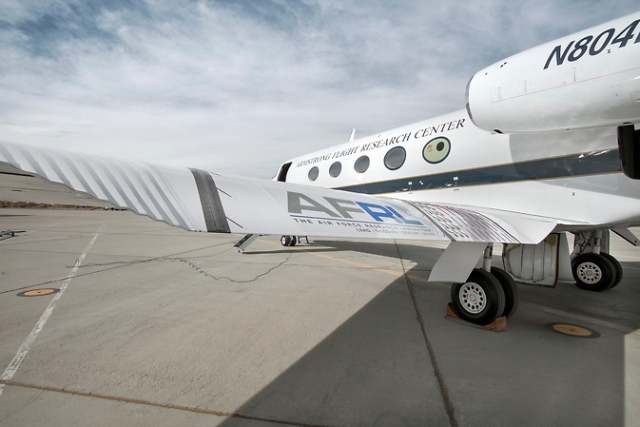 Image Credit: NASA/Ken Ulbrich
Image Credit: NASA/Ken Ulbrich
In order to improve aerodynamic efficiency, researchers have substituted the traditional aluminum flaps found in an airplane with trailing-edge wing flaps that can seamlessly bend and twist during flight.
This latest breakthrough is part of the Adaptive Compliant Trailing Edge (ACTE) project, a collaborative effort between the U.S. Air Force Research Laboratory (AFRL) and NASA.
The flexible flaps may also help to reduce the noise produced during landing and take-off. Tests will be conducted with the modified Gulfstream III in order to establish the veracity of these shape-changing assemblies. With this new innovation, quieter and more fuel-efficient airplanes could soon be a reality.
FlexSys developed a variable airfoil system dubbed FlexFoil, which can be easily integrated into new or existing airplane wings. At present, ACTE is being flown at the California-based Armstrong Flight Research Center of NASA.
Large amounts of data will be collected by using different flap settings. However during the preliminary ACTE flight, the new control surfaces will be locked at a given setting. The data obtained will be used to demonstrate the capability of the wings in real flight environments.
This flight test is one of the NASA Environmentally Responsible Aviation (ERA) Project’s eight large-scale integrated technology demonstrations to show design improvements in drag, weight, noise, emission and fuel reductions.
Fay Collier, ERA project manager at NASA’s Langley Research Center
The latest ACTE technology may revolutionise the aviation industry. Sophisticated lightweight materials would not only help to reduce the structural weight of the wings but would also enable engineers to design wings which promote more efficient operations and enable better fuel economy.